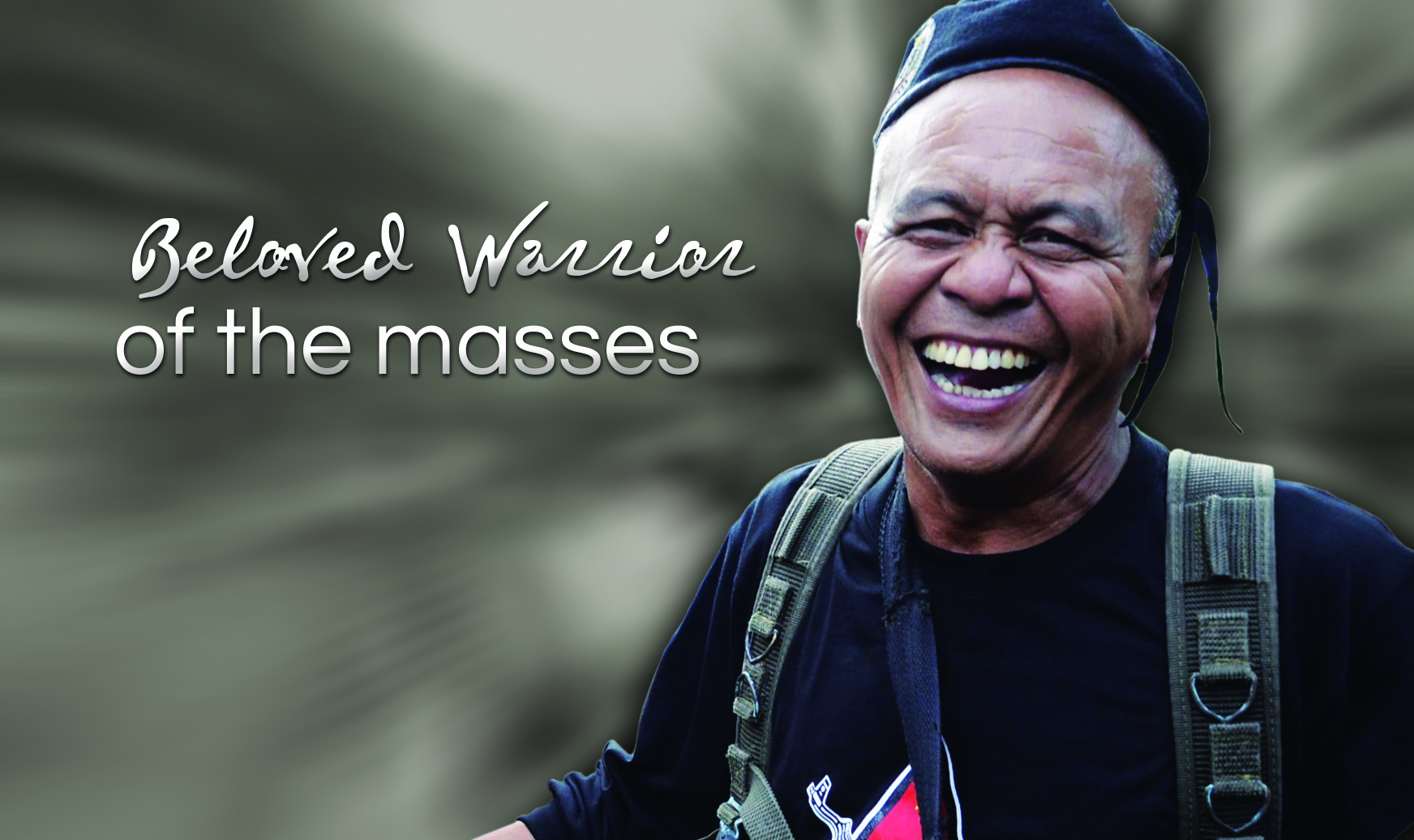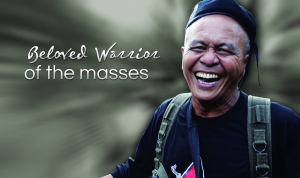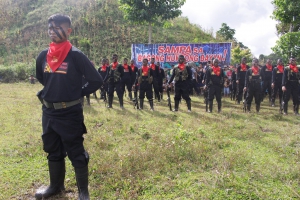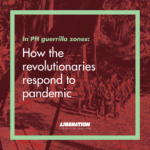Beloved Warrior of the Masses

by Pat Gambao
In life and in death, he remained an unfading inspiration to the entire revolutionary forces and the masses. His selfless commitment to serve the exploited and oppressed, his unflinching sacrifices and his relentless perseverance and valor bespeak of the communist spirit. His significant contributions to the revolutionary movement and the people’s democratic revolution for national liberation and social transformation are etched in the hearts and minds of every fighter, every man and woman, every child in the areas where he left his imprint.
Commander Ka Parago had lived with the masses for decades, zealously serving them, protecting them and helping them with their problems. He loved the masses so much and he in turn was dearly loved by them. For these, he has been revered. Even children who barely had a glimpse of him when he was alive fondly call him tatay (father) to these days.
Leoncio “Commander Parago” Pitao joined the New People’s Army in 1978. His mastery of the Marxist-Leninist-Maoist (MLM) principles was manifested in the excellence of his practice. He held on to the correct political line as he built organs of political power and mass organizations. He led the pursuit for land reform while advancing the struggle. He also developed close ties with the masses—the peasants, workers and indigenous people, as well as built relations with allies. A brilliant strategist and tactician in guerrilla warfare, he led the First Pulang Bagani Company in the Southern Mindanao Region to many victorious offensives against the reactionary government’s military forces. Commander Parago was the most famous NPA commander of his time. The local reactionary forces dreaded and hated him.
Commander Parago was captured by enemy forces in 1999 but was released on recognizance in 2001, a confidence and goodwill measure for the resumption of the peace talks between the Government of the Republic of the Philippines (GRP) and the National Democratic Front of the Philippines (NDFP). Upon release, he went back to the countryside to continue with the struggle.
But the enemies never stopped to wreak vengeance on Ka Parago. They abducted his daughter, Rebelyn, and ruthlessly killed her. That great blow in his life almost broke him down. For three days, the tough commander locked up himself in his shack, crying, not wanting to talk to anyone, refusing to take in any food, not so much from grief but from rage. No one among his comrades dared to disturb him. So they turned to those they knew Ka Parago could not refuse—the masses in the community who became close to him. And it was them who convinced him to eat, calmed him down and brought him back to his senses; the masses he loved so much. He had lived his life for them since his awakening to the wretchedness of their plight; for them he had pledged to die fighting.
For some time, Ka Parago had been sick with diabetes, hyperthyroidism, hepatitis and hypertension. His comrades advised him to take a leave for medical treatment and rest outside the area of his command but he opted to stay and live with the masses.
On June 28, 2015, an enemy team raided Purok 9 of Barangay Panalum in the Paquibato District of Davao City where Parago was undergoing medical treatment. He was with NPA medic Vanessa Limpag, Ka Kyle. The enemy immediately riddled Commander Parago with bullets upon sight of him. Vanessa, who had raised her hand and made known she was a medic was also gunned down. Ka Leoncio Pitao passed away at 57.
In contrast to the lenient and humane treatment that Commander Parago and his unit rendered to captured enemies and prisoners of war, he was summarily killed in stark violation of International Humanitarian Law (or the laws of war).
For some time, his men who had always hung on to his shoulders were disheartened and, like the enemy, entertained the thought that the revolution in that part of Mindanao would crumble. But then, the legacy he had left behind—the education and training of so many revolutionaries who will carry and pass on the torch till victory of the Philippine revolution, the burning desire he sowed in the hearts of the masses to be freed from the bondage of exploitation and oppression, the life he lived, the communist virtues in his being—fired the revolution to even greater heights, delivering fatal blows to the enemies.
It was harvest time for the seeds that Commander Parago had sowed. The First Pulang Bagani Company has since become a full battalion. His successors have become more determined to advance the revolution to victory. The grief for the loss of the beloved comrade and valiant hero has turned to revolutionary courage as a lasting tribute to his cherished memory.






 Two platoons of the Milisyang Bayan (MB, People’s Militia) beefed up the NPA security force to thwart any untoward action by the military during the celebration. Ka Deling recalled that four days before, members of the paramilitary group CAFGU put up a blockade on the road leading to the venue. But this was immediately dismantled by the people. On December 23, a group of policemen wanted to check whether the village is “drug-free”. But the people only jeered at the policemen. Warning that the NPA forces are around, the masses told the policemen they could enter the village only if they left their weapons behind.
Two platoons of the Milisyang Bayan (MB, People’s Militia) beefed up the NPA security force to thwart any untoward action by the military during the celebration. Ka Deling recalled that four days before, members of the paramilitary group CAFGU put up a blockade on the road leading to the venue. But this was immediately dismantled by the people. On December 23, a group of policemen wanted to check whether the village is “drug-free”. But the people only jeered at the policemen. Warning that the NPA forces are around, the masses told the policemen they could enter the village only if they left their weapons behind. its unilateral ceasefire in the face of the escalating attacks by the Armed Forces of the Philippines (AFP) and the Philippine National Police (PNP) against them and their communities.
its unilateral ceasefire in the face of the escalating attacks by the Armed Forces of the Philippines (AFP) and the Philippine National Police (PNP) against them and their communities.

